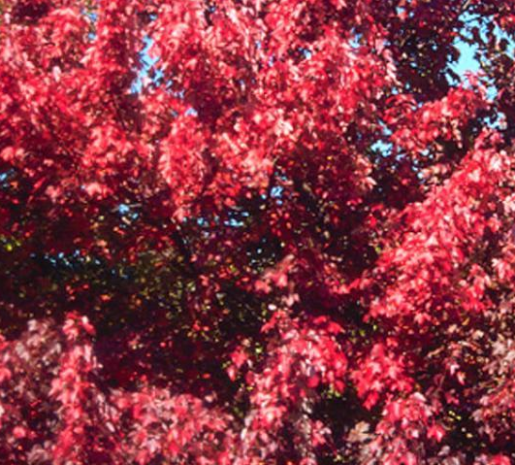A huge shade tree known as the Freeman maple (Acer x Freemanii) was created by crossing red and silver maple trees (Acer rubrum x Acer Saccharinum). The best characteristics of both parent species have been passed on to this hybrid. This tree’s attractive form and fiery autumn color are inherited from its parent, the red maple. The silver maple is responsible for its quick development and extensive tolerance of soil.
There are roughly a dozen different “freemanii” cultivars of Freeman Maples, although only about half of those are commonly found in nurseries. Some cultivars have an oval shape, while others are more columnar. The Freeman Maple’s adaptability makes it a valuable landscape addition. It can be used for a variety of purposes, including providing shade, creating a “focal point” in the landscape, and blocking out undesired views. Numerous cities also frequently use the Freeman Maple as parkway trees.
Freeman Maple Pros and Cons
Freeman maples are often grown along streets or to provide shade. Freeman maples are selected for their stunning fall color, which is typically present in red maple, as well as the additional hardiness and ease of growth that are frequently found in a hybrid.
Freeman maple has lovely fall colors, grows quickly, and is more urban-tolerant than silver maple.
Freeman’s maple is preferable to red maple in urban environments because it is less susceptible to stress caused by iron chlorosis and can survive in higher-pH soils.
In general, this is a rapidly growing tree that is not overly fussy about site conditions; however, the rapid growth frequently results in weak structure, and unmanaged trees are susceptible to significant limb failure, as is the case with silver maple.
Freeman maples are susceptible to maple bladder gall and Verticillium wilt, both of which can be fatal if left untreated. It is more resistant to chlorosis than red and silver maples. These hybrids are also prone to suffering from sunscald and frost cracks.
The following problems are also found in the Freeman maple trees:
- Maple bladder gall is a disorder caused by microscopic mites that eat the leaves and form small, spherical galls on the upper part of the leaf.
- A fungal disease known as “tar spot” causes black, tar-like spots to appear on leaves, which hinders photosynthesis and detracts from aesthetic appeal.
- A fungus called anthracnose develops dark patches, blotches, and sores on leaves, particularly near the veins.
- A fungus called powdery mildew causes the leaves to develop a white, powdery coating, which weakens and ruins the look of the leaves.
Freeman Maple Care
The Freeman maple, also known as Freeman’s maple, is a huge tree that grows to be 40-60 feet tall when mature and is a cross between red maple and silver maple. Freeman maple has opposite, simple leaves with five deep lobes and toothed margins. Fall colors range from red-orange to yellow.
The tree flourishes in USDA hardiness zones from three to seven. It’s important to know that the Freeman maple hybrid can grow to a height of 14-21 meters (45-70 feet) before planting it. Freeman Maple is a low maintenance tree and does not require much attention.
For the best autumn foliage displays, Freeman maple trees are recommended to be planted in full-sun locations. In contrast, the type of soil is of lesser importance. The best-growing conditions for a Freeman maple involve moist, well-drained soil; however, this tree can handle wet as well as dry conditions.
Freeman Maple Problems
The Freeman Maples are attractive specimen trees. They are also grown in the streets. In general, the bark of this species is thin and easily damaged. This indicates that the bark of the tree is susceptible to both sunscald and frost damage. When caring for a Freeman maple, it’s important to use tree guards to keep young transplants safe during their first few winters. The short root systems of the Freeman maple present another possible problem. As these maples mature, their roots can reach the soil’s surface. Because of this, it is possible to endanger the health of a mature tree by transplanting it. Selecting a cultivar is necessary if one plans to cultivate Freeman maple trees. Numerous options offer various features and forms.



